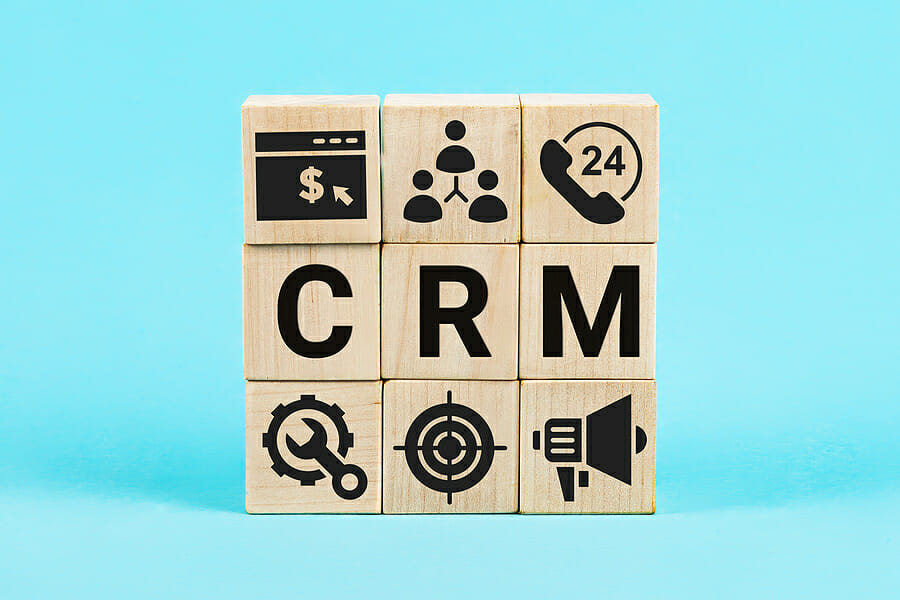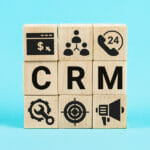Nowadays, a bespoke CRM system is a must-have business application for any growing company with great ambitions. In this article, we will describe in detail what are the strengths of CRM soft and how to create a CRM program that would suit your business particularly.
A customer relationship management system, or a CRM system for short, is a software product that is widely used in marketing and sales departments to maintain communication with customers in a more efficient way, as well as manage the process of converting leads into clients more conveniently.
At one time, CRM systems made a real breakthrough in how companies interact with the client, and today such solutions are an indispensable assistant in any sort of business. In case you want to realize the full potential of your company, then Google Docs and Excel spreadsheets should be immediately replaced with a feature-rich CRM system.
According to the State of Sales prepared by experts from LinkedIn, about 64% of respondents say that CRM systems are an extremely important tool in their workflow. Last but not least, almost 20% of surveyed companies said that customer relationship management solutions skyrocketed the job satisfaction rates among their employees.
It is not surprising that businesses have a fairly unambiguous opinion about CRM systems. Such applications can immediately solve a whole bunch of problems within sales and marketing departments, and might also come in useful for specialists from support teams. Modern feature-rich programs can track interactions, perform contact management, create schedules and set reminders, monitor sales pipelines, provide reporting and analytics, run databases, and much more.
Types of CRM Solutions
The line between various classes of CRM programs is quite blurry. The thing is that many companies resort to building custom software with the ultimate set of features. Therefore, the division of systems into categories can be rather arbitrary.
However, at Fively, our engineers involved in the creation of CRM systems adhere to the widely accepted classification. We suggest you take a closer look at it right down here.
Analytical CRM Software
As it is not difficult to guess, this type of CRM program is used to collect and process customer databases. Analytical CRM apps would come in handy in order to set to rights the available information. In addition, such systems can issue statistics based on the information collected. All this greatly simplifies the work upon planning and setting up a marketing strategy.
Operational CRM Software
Operational CRM applications are used by companies worldwide to achieve a flawless customer journey. Such soft allows them to significantly automate the entire workflow and thereby increase the efficiency of the sales departments and thus reach a large audience. In addition, as you know, automation greatly reduces the chances of human error.
Collaborative CRM Software
Collaborative CRM systems play a critical role in synchronizing all the operations across different departments. Such solutions allow specialists from marketing offices, sales departments, and support teams to work securely with the same data, update and edit it. Collaborative CRM apps make the workflow seamless and help employees stay on the same wavelength.
Benefits of Custom CRM Systems
Modern CRM programs are very complex and quite flexible business tools. Often they are produced at the request of a particular company to be addressed with a specific pool of tasks. For this reason, the very functionality can differ quite a lot on a case-to-case basis.
Nevertheless, CRM software has an integral set of tools, which ultimately determines the strengths of such solutions. Here’s just a tiny bit of why customer relationship management apps do outmatch their more mundane and old-school alternatives.
Customer-Centric Approach
Customer-centricity and a personal approach are the two pillars on which modern business stands. The present-day customer takes a high level of service for granted, and companies often do not have enough resources to meet such requirements. At such moments, CRM systems come into play to help your employees find some individual attention and thereby bump up not only customer satisfaction but also customer retention rates.

User-Friendly Dashboards
Unlike Google Docs and Excel Spreadsheets, CRM systems are specialized software applications that were built for very specific tasks. Therefore, all contemporary customer relationship management software has a well-thought-out user interface that is easy and pleasant to use.
Total Automation
One of the main strengths of CRM applications is their almost limitless possibilities for automating customer-related activities. For example, many solutions offer a wide range of tools for tracking and changing customer status, sending personalized email newsletters, generating automated reports, and so on.
Segmentation of Clients
Over time, companies accumulate an essential customer base. If this data is not systematized using special tools, then the risk is already extremely high that it will soon become difficult for you to navigate through thousands and thousands of names, email addresses, and other contact information. To effortlessly navigate the flow of information, you just need a CRM system.
Difference Between Custom and Off-The-Shelf CRM Software
Business owners are usually faced with an either-or choice: to buy an off-the-shelf CRM system or build a bespoke CRM system from ground zero. Not all companies have the resources to spend on creating a custom solution, but the benefits of tailored software cannot be ignored. And in some cases, these benefits outweigh all doubts and trifling advantages of out-of-the-box applications.
First and foremost, we should notice that if you decide to get your custom program developed, you will be limited solely by your business requirements and budgets, which allows you to come up with the perfect tool tailored specifically for your business. Moreover, you don’t have to put up with the shortcomings of the off-the-shelf system that you have no power to change the way you need.
On top of that, it is worth mentioning that in the long run, your own CRM application is more budget-friendly than its out-of-the-box alternatives. The point here is that often the most necessary functionality is available only when you enter a premium subscription or purchase some expensive modules. When it comes to unique soft, you are free to define the entire functionality yourself, and you will pay only once – for its implementation.
Developing a CRM Application Step-By-Step
After you completely realized that your business needs a CRM application and even chose what particular kind would suit you better, all you have to do is contact a company that will build a custom CRM solution.
The engineering of a bespoke CRM app can take up to 6 or 7 months, and its software development life cycle will not differ much from other cases of software development. It will consist of 7 phases: planning, gathering of requirements, prototyping, development, testing, deployment, and maintenance.
The planning stage is necessary in order to understand what resource costs the project will entail, as well as to set goals and assemble an appropriate team of experts. This is the stage at which the detailed planning of the entire project from start to finish takes place.
The gathering of requirements stage doesn’t need much explanation. This is the point at which engineers collect all the wishes from the client, and discuss which ones are a priority, and which ones can be abandoned in order to save some resources.
During the prototyping phase, engineers are thinking about the entire architecture of the future CRM system, and designers are drawing the user interface. As a result, they will get a functioning mock-up of the application, which can be shown to the stakeholders and which will be further implemented by programmers.
During the development phase of a CRM system, the software will gradually become the very product that end users will utilize. Under the guidance of project managers, front-end and back-end engineers will code your unique software product.
The testing phase will run alongside development. It is crucial so that the QA team can identify the maximum amount of bugs and report them to the coders, who in turn will fix them. Not a single modern software building project can do without testing, since the quality of the final product largely depends on it.
When the product is ready, it’s time for deployment. This is the stage at which the product becomes available to its future users. It is often the case that deployment is preceded by some preparation, such as writing installation guides or making a strategic plan on how to incorporate the software into the enterprise’s workflow.
The last stage of creating a CRM system from scratch is its maintenance. This last step is necessary to fix some emerging bugs here and there and smooth out shortcomings that became apparent only after receiving feedback from real-world users. During this phase, updates will be released periodically that will improve the application when necessary and brighten its general performance.
Instead of a Wrap-up
Developing a bespoke CRM app is a fateful step for any business. So it seems that in the current technology-centered world, this step is inevitable. However, not all business owners are ready to accept this fact. Therefore, if you hurry up, then cutting-edge technologies can provide you with a smashing competitive edge over them. All it takes is to choose a software company you would rely on.
Bio: My name is Alex Kalachyk. I am a CEO at Fively. For more than 10 years, I have been developing custom web applications for business. I made all the way from a simple engineer up to the founder of a software company, which today employs 100+ experts. I have a lot to say – so that’s what I’ll do!
Image Source: BigStockPhoto.com (Licensed)
Site Disclaimer
The Content in this post and on this site is for informational and entertainment purposes only. You should not construe any such information or other material as legal, tax, investment, financial, or other advice. Nothing contained on our Site constitutes a solicitation, recommendation, endorsement, or offer by HII or any third party service provider to buy or sell any securities or other financial instruments.
Nothing in this post or on this site constitutes professional and/or financial advice. You alone assume the sole responsibility of evaluating the merits and risks associated with the use of any information or other content in this post or on this site.
You recognize that when making investments, an investor may get back less than the amount invested. Information on past performance, where given, is not necessarily a guide to future performance.
Related Categories: Work, Reviews, Tech







